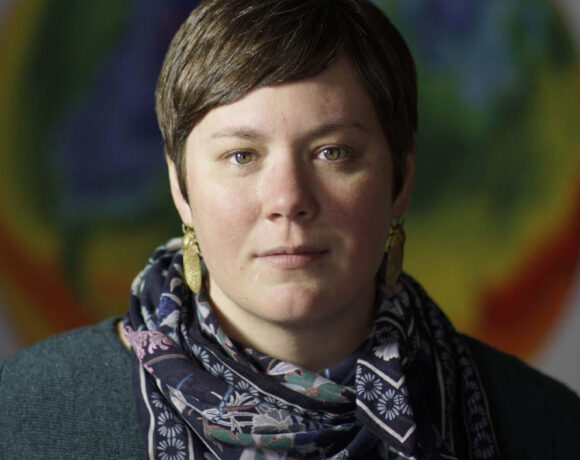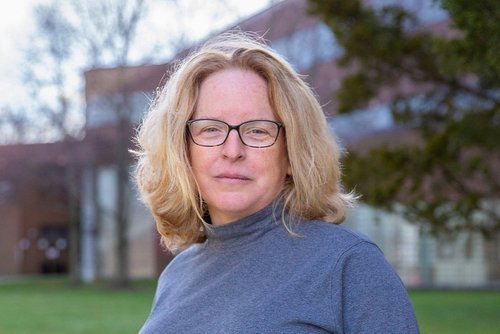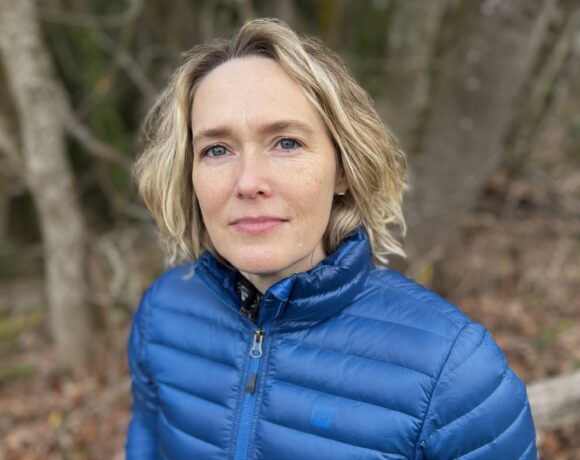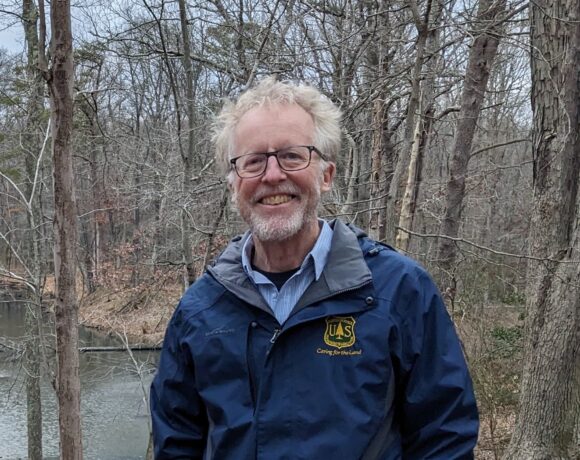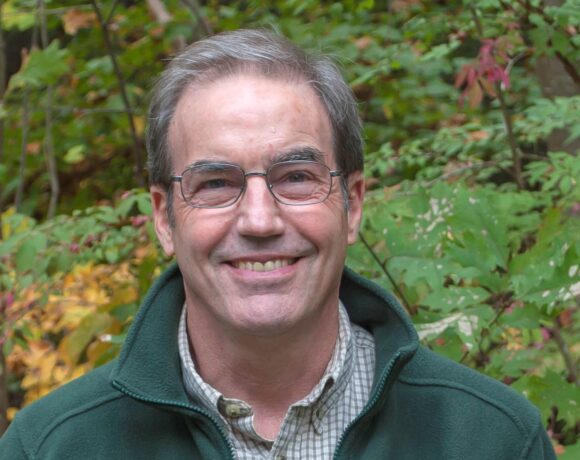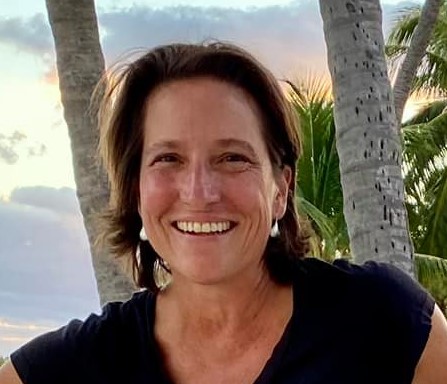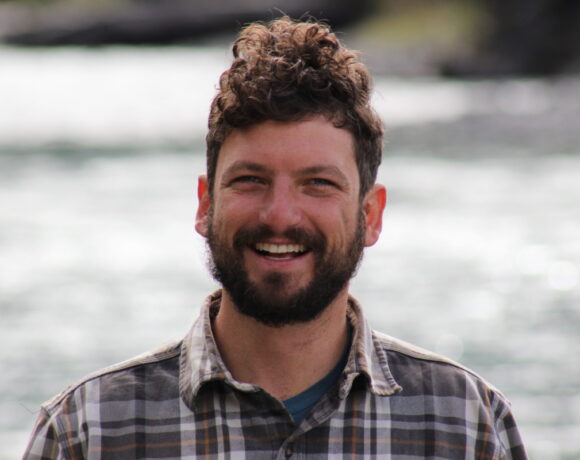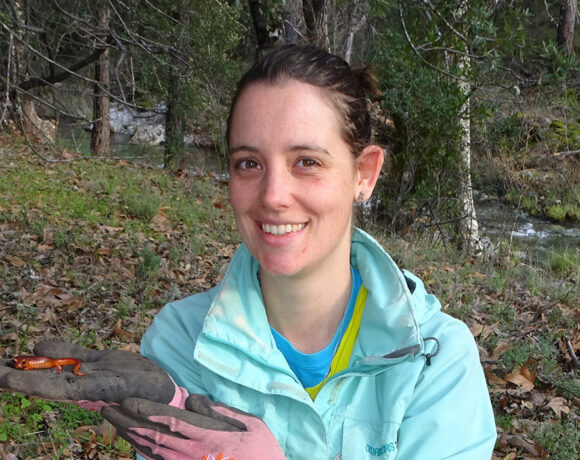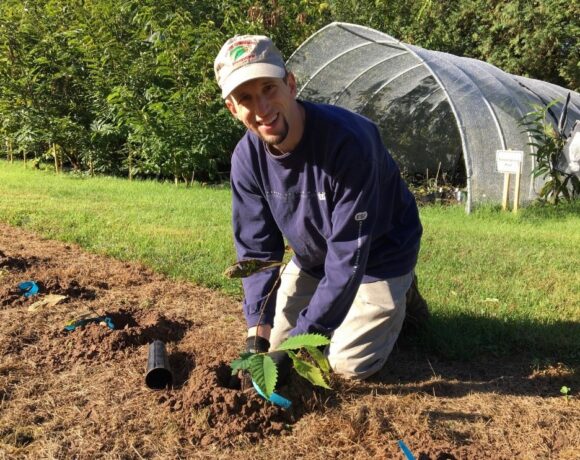This month, we connected with Dr. Andrew (Sandy) Liebhold, a research entomologist with the U.S. Forest Service’s Northern Research Station with over three decades of experience studying population invasion ecology of major forest invasives.
Watch the interview here:
View transcript:
Justin Dalaba (JD): This is Justin Dalaba with the New York invasive Species Research Institute and we have here Andrew Leibhold, who goes by Sandy for short, with us for our researcher spotlight, and we’re really excited to have you. So Sandy is internationally recognized, has years of experience working with forest invasives. And so we’re going to learn a bit more about your work and involvement over the years. And hear some of your perspective on some of the pressing invasive forest pest issues that we’re dealing with. So I guess just to go ahead and dive right in, could you start out by just telling me about your role with the Forest Service?
Andrew Liebhold (AL): Yeah, I’ve been, for the last 35 years, I’ve been a research entomologist with the U.S. Forest Service with the Northern Research Station in Morgantown, WV. Although I also have an affiliation, I do some work, with the Forest Service Rocky Mountain research station in Fort Collins, Co.
JD: And you’re joining us today from the mountains of West Virginia, which sounds quite lovely. And I know you’re also involved in and have been involved with a number of working groups over the years too. So do you have any other roles or affiliations that you wanted to mention as well?
AL: Well, yeah, I mean, aside from you know my main role as a Forest Service scientist, I have a lot of other affiliations. I’m actually part of a really large research grant at the Czech University of Life Sciences in Prague. So I lead a research group there and I’m also leading a research working group at the National Socio-Environmental Synthesis Center sort of on the socioeconomics of historical forest historical insect invasions.
JD: Fantastic and so how did you find yourself down this path? You know what got you started into the invasive species world and particularly working with forest invasives?
AL: Well, I got my PhD in entomology back in 1984 at UC Berkeley and my training there was really in forest entomology. I’ve always loved forests. When I was a kid, my parents took me camping a lot and so loved forests and so I went into forest entomology and to be honest, it’s something that’s really happened over my career is that the whole field of forest entomology has sort of been eclipsed by the invasive species problem because more and more of our most damaging forest insect problems are non-native species. And so it’s more of and more of our focus has been on these invasive species and a lot of these you know, working on several different non-native forest insects, I started to become increasingly interested in sort of the big picture of, you know, what’s the overall cause of this problem and what are kind of some of the overall strategies for solving the problem?
JD: Yeah, and so to that point I wanted to kind of explore some of the questions that you’re looking at around that right now. So yeah, a lot of your work is sort of centered around understanding these processes and the factors that are driving various forest invasives. So can you tell me about some of the questions you’re currently exploring? Maybe some of your big research goals you have going on right now?
AL: Well, one of the things that I’m really excited about right now is kind of the role of plant invasions in insect invasions. As I mentioned, I’m increasingly interested in sort of the big picture of this problem of biological invasions of insects, because there’s something that’s happening all over the world and basically every part of the country, uh part of the world we you know, called human civilization is increasingly impacted by non-native insect invasions. With thousands of these species invading different world regions and one of the things in my research and collaboration with others that we’ve, it’s not something I really anticipated, but we’re increasingly seeing there’s really a link between plant invasions and insect invasions. And there are kind of two sides to that. One is that the actual process of people moving plants around the world provides a pathway for by which insects very often move with them. But then there’s the other part of it is that when a plant is either propagated or if it spreads on its own as an invasive species, it actually creates a new ecological niche for non-native insects and so actually by sort of creating these ecological niches in these in places where the plants are invading it allows insects to it promotes the establishment of non-native insects and there are a lot of good examples we’ve seen lately with you know species like the brown marmorated stink bug or the spotted lanternfly. These are both insects that specialize on non-native plants and serve to illustrate this kind of larger trend. And of course, not all insects are herbivorous. Not all insects feed on plants, but the interesting thing is that you know that these non-native plants, invasive plants, they create ecological niches for plant insects that do feed on plants. But then there are a lot of other insect species that feed on insects, either predators or parasitoids, that sort of thing. And so, these plant invasions indirectly promote even invasion of these of these other organisms that aren’t plant feeding. So it’s a really interesting phenomenon and I feel like as we dig deeper into this, we’re getting a deeper and deeper understanding of the role of plant invasions in historical insect invasions around the world.
JD: Right absolutely, and that’s I guess. Kind of a good segue into my next question for you, which is, you know, because you’re so focused on some of these big picture aspects of the population invasion ecology. How has some of your research helped to inform the management, the actual on the ground decisions that go into – What do we do about these problems?
AL: Yeah, that’s a good question. Well, I think that I’m a big believer in that ecology has a lot to offer in terms of providing better management solutions. And I feel like I’ve contributed maybe to a couple in a couple of situations where some of the work that we’ve done has provided some useful input and led to kind of new approaches. So one of those is that for managing the spread of invading organisms, you know as they expand their range, one of the things that we’ve learned is that when a lot of non-native species they spread, they don’t just have a continuous spread into new areas of diffusion, but instead what happens is you get populations jumping ahead and forming isolated populations, and then those populations coalesce and that promotes spread. And by understanding this phenomenon, it’s actually led to kind of a new approach to managing spread, that instead of creating like a barrier zone where you basically kill every organism in the along the expanding population front, our understanding of this kind of discrete spread via discrete jumps has led to a new approach where basically the strategy is to find these newly established, isolated populations ahead of the expanding population front, find them and exert rather limited resources to suppress those populations. And by doing that, it’s possible to greatly reduce the spread of an invading species. And this is this is a concept that that we applied and I’m very involved in what we used to be called the gypsy moth, now the spongy moths slow the spread program. That is operated by the US Forest Service in cooperation with several state governments to slow the spread of the spongy moth, and it’s been a tremendously useful, successful program that we’ve been able to reduce the rate of spread of this species by over 50% and the environmental impacts of the program have been really minimal. So I feel like it’s a real model system for this success, and it’s a really good example of how a little bit of science has had tremendous applications. And then maybe one other area I can say that, you know, we’ve been able some work on population ecology of insect populations has led to some, you know, important implications for management has been in eradication. One of the things that we discovered about low density populations of almost any organism is that low density populations, they tend to go extinct. And for sexually reproducing organisms, that may be because males and females simply can’t find each other, and so we really discovered from this is that eradication, it always seemed like such a difficult thing to do to, you know, eliminate every individual in the population and so our work on population ecology invading species has led us to realize that actually you don’t need to actually kill every organism to eradicate a population, you just need to eliminate a certain fraction of the population and then they’ll go extinct on their own. And that’s led to some maybe new approaches to eradication of a variety of different types of organisms.
JD: Yeah, that’s fantastic and you mentioned some big examples there, so of course the spotted lanternfly is one we’re dealing with trying to prevent and keep from spreading farther north in New York. We also saw the gypsy moth, or spongy moth explosions over the past couple of years and then of course there’s the more long term management of emerald ash borer. So I’m curious to hear your perspective. Are there other species that you’re working with or that are on your radar is kind of the big priorities for management right now in the Northeast in general?
AL: Well, I you know, maybe just backing up a little bit that just with eradication is one of those things that it’s one of the interesting things about managing invading biological invasions in general. Is that very often it’s easier to see our failures then the successes. Because the successes, the species aren’t established, and you don’t notice it, and the failure is more evident. I would say emerald ash borer, spotted Lantern fly, you know, a lot of these other invasions, they’re probably examples of failures. There’s examples of invasion pathways that we weren’t adequately managing and not detecting populations early enough to be able to eradicate them, but actually historically there actually have been a lot of successes in terms of eradicating insect populations around the world. Particularly, I’ve been involved in a lot of projects in New Zealand and Australia. They tend to be a little more switched on when it comes to biological invasions, so they invest quite a lot of resources in in surveillance of new populations. And there have been some really tremendous success stories in in the last couple of decades of detecting and eradicating insect populations before they became established.
JD: That’s really interesting, and I appreciate your point too about the failures are somewhat easier to notice, but in some sense I do feel that they’re often less talked about, at least from a management perspective, and it’s important to look at those and apply them to – how do we improve our successes moving forward? And that’s been a big point of discussion with our stakeholders in New York and so I guess on the theme of thinking forward – You know climate change has been somewhat of a theme throughout your work over the years, so I’d be really interested to hear your perspective on how that’s influenced some of the research you’re doing and what you’re learning from these invasives with a changing climate.
AL: Well, you know it’s an interesting thing that I think climate change and biological invasions in in some ways they’re very different problems, you know. I think that it’s important to acknowledge that most biological invasions, the ultimate cause of most biological invasions is globalization. That is, the increasing movement of people and international trade, and that most biological invasions are unfortunately an inadvertent result of that, and so from that perspective, for most invasions you know, climate change probably has played a relatively minor role in that. On the other hand, there are a lot of exceptions to that. Most notably, there are a lot of species where there are examples of species that have expanded their range. For one reason or another, and a lot of times, that’s the result of climate change. For example, in the Western United States, there’s a gold spotted oak borer is an example of that, where climate change seems appears to have caused this beetle species to expand its range into areas where it hadn’t existed, at least for the last several thousand years, and there are actually quite a few other examples like that. The impacts of those species, you know, it’s hard to generalize, but the impacts of these species, that sort of gradually expanded their range as a result of climate change, they’re probably I would say in general or probably a little less than the species that have jumped from continent to continent. And so maybe that’s the important thing to say. Keep in mind these intercontinental jumps, mostly a result of globalization rather than climate change. But then there’s another flip side of the interaction between climate change and invasions, and that’s the question of how invasions actually affect climate change, and one of the things that is really interesting and we’ve really learned a lot about in the last few years is, you know, if you look at the continent in general, especially the eastern northeastern U.S., we have a tremendous number of quite damaging invasions that have happened in the last 100 years and a lot of these things like chestnut blight, emerald ash borer, Dutch Elm disease, they’ve caused a huge amount of tree mortality. And that tree mortality has had a significant impact on global carbon cycles, and so it’s one of the things that we’re still really beginning to understand. But I think it’s not a trivial factor that that biological invasions actually do impact global carbon cycles and that in turn potentially affects climate change. Because these biological invasions often result in tremendous amounts of tree mortality and so you have life carbon being turned into dead carbon and some fraction of that is released into the atmosphere. But it’s an area it’s really interesting and I think in the next 10 or 20 years, we’ll probably learn more about it.
JD: Yeah, that’s fascinating and I know you were going to be involved in the Northeast RISCC Management Symposium, that’s coming up in in February. So just I guess to throw in a quick plug for that. That’s a pretty cool effort within the Northeast to try to grapple with some of these really big picture climate change and invasive problems, in particular with forest management being a big focus of that effort. So, I had a couple of the questions for you, but I wanted to hear, I guess, still thinking on sort of the long term. What do you hope the impact of your work will be? You know you? You worked for a number of years on these forest invasives and have gained some international recognition and awards for your research. What do you see as your impact that you want to leave behind with your legacy in this in this realm?
AL: Well, you know, I think that’s hard to say, but I think there’s no question. It’s one of the great things about science is that you know one thing builds on another. And I think it’s one of the great things about science, is that it’s very much sort of a stepping stone, and. My guess, to be honest, I actually find it hard to know, you know, I know what type of work I do that people are most interested like currently, but it’s hard to know a lot of times you know you do some research and nobody’s really interested at the time. And then 20 or 30 years later. People become very interested in it, so it’s a little bit hard to know. And the other thing is, is that I think another kind of cool thing about science and research is that. You know pretty much almost any conclusion that we make now will probably eventually be proven wrong, so maybe that’ll be the most interesting thing to see. Is like how many of the profound conclusions I’ve made in the past that people will show was actually completely wrong so. And I think that’s great. That’s really the wonderful thing about science is that is that everything is debated, and you know that, I think that our view of what’s really going on is going to change over time. It’s inevitable.
JD: Yeah, I actually love that answer, and that’s for me the same thing. The beauty and fascination of science is that we’re constantly disproving what we thought we knew, and I guess, bringing ourselves somewhat closer to a truth or a new truth than in whatever question you’re trying to grapple with so.
AL: Yeah, I mean. Another thing that’s kind of I and I think this is particularly relevant to the problem of biological invasions because there’s one thing that I think if you look back in the last 200 years with biological invasions, a lot of invasions really happened as a result of people thinking they were doing something that was really useful but actually turned out to be a big mistake. So you know, I think that that’s one of the you know things like introducing plants, or, you know mammals, other even insects. Very often people have really good intentions and it turns out that in retrospect they shouldn’t have done that, and I think you know all those things serve a little bit of a lesson to think twice before you do anything, especially when it comes to environmental management.
JD: Yeah, I think that’s so true, and that’ll definitely resonate well with our group of invasive species managers across New York. You know, it’s just a constant learning process and learning and adapting those are the key. So, I guess to kind of wrap things up I wanted to hear what lies ahead for you. What’s next? Do you have a new paper or question you’re excited to explore what’s going on in your world right now?
AL: Well, a lot of things. I mean, one project that I’m working on with my group in in the Czech Republic is insect invasions of insects on Robinia or black locust, and I don’t know if you know this story, but black locust is a tree species native to the Central Appalachians in North America and one of the amazing things about it. It’s one of the most successful and widespread invasive trees all around the world and in Europe, it’s by far the most common and dominant invasive tree species, but even in North America it’s you know, originally really was probably not a very common tree species and it’s greatly expanded its range in North America because it turns out it does really well on disturbed sites. And one of the things we’ve been studying this tree species from the from really as an example of a larger phenomenon that I was mentioning before of plant invasions driving insect invasions and we see this at various scales that that within North America, as black locust has expanded its range, we’ve seen all these insect species that specialize on black locus – They’re following it, and they’re tracing it out following it, where it where it goes, although they haven’t quite caught up with all of the all not all the species have been able to expand as fast as black locust. And the same thing is happening all over the world. We’ve collected data from, you know, Europe, Asia, South Africa and Japan. And in all these areas we see this trickle of insect invasions accidentally being introduced to those areas and following it, and I think it, it really serves as quite a nice example of, again this larger phenomenon of plant invasions, driving insect invasions, and if anything, it serves as further justification of concern about invasive plants that the impacts of invasive plants have these cascading effects of insect invasions and, and so you know it probably provides more evidence to justify efforts to manage plant invasions.
JD: Yeah, that’s really interesting and it definitely speaks too to the importance of international collaboration when it comes to these things. So, this has been a really fulfilling conversation for me. I hope you’ve enjoyed it as well. I wanted to just, I guess, ask one last question which is, is there anything we didn’t discuss that you wanted to add?
AL: Wow, well, I mean I guess you know the other aspect of, you know cause a lot of your questions have been sort of about the future and, you know a lot of times, a lot of us attribute Donald Rumsfeld in his statement about there are the known knowns and the known unknowns in the future. And I think in the field of biological invasions we know there are a lot of known unknown unknowns, that is, species that aren’t even on our radar. That probably will hold the potential for causing a lot of damage, and you know we look in the in the Eastern or North America in general, we’ve seen things like emerald ash borer, Dutch Elm disease, and chestnut blight. You know, having just tremendous impacts of almost completely wiping out their hosts. And I think I personally I do worry about that a bit because you know, again it’s one of the things I think it’s really interesting the Northeastern U.S., we’ve had kind of more than our fair share of these damaging insect and disease invasions, and sometimes I worry about, you know, if we were to have, say, some sort of disease or insect that were to, you know, wipe out all pines or even or eliminate most pines, not necessarily wipe them all out. That’s kind of scary because you know the giant, there are few genera out there, you know Pinus and Quercus, that in North America, they comprise a large fraction of the trees and forests, and so I do worry about that. And so, I think you know. Again, it’s all the more reason that it’s a problem that we shouldn’t wait until these kind of horrific things happen. We, I think we need to be more proactive about managing invasions in the future.
JD: Yeah, I think that’s an important reminder and I guess a good note to round out this conversation on. So, Sandy, I can’t thank you enough for your time. This has been awesome to connect with you and I’m excited to be able to share your work in perspective with our audience. I guess if there’s anything that you want us to link to keep us posted, we’ll be sure to include that with the post. Thank you again. This has been awesome.
AL: Thanks, it’s really been fun having conversation and nice to be able to connect to your group.
For more info, visit:
https://www.fs.usda.gov/research/about/people/aliebhold
More researcher spotlights:




